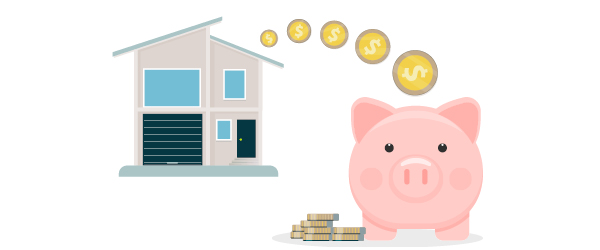Downsizer contribution
Downsizer contribution
Section Heading
Downsizer contributions can give older Australians, who are downsizing or planning on downsizing their family home, the opportunity to put a large sum of money into super in time for retirement.
Grow your super with a downsizer contribution
You can make a downsizer contribution to your super from age 55. This simple but significant change is giving more people the opportunity to top up their super without the usual contributions cap that applies.
What is a downsizer contribution?
It’s a one-off, after-tax personal contribution into your super from the proceeds of the sale (or part sale) of your home. You can contribute up to $300,000 for an individual or $600,000 for a couple.
A downsizer contribution doesn’t count towards the non-concessional (after-tax) contributions cap of $120,000 per financial year. This means, if you’re eligible, you could give your super balance a big boost, without exceeding the cap.
Am I eligible to make a downsizer contribution?
From 1 January 2023, the minimum age at which a person can make a downsizer contribution is 55. However, there are other criteria that still need to be met:
-
The home you sell was owned by you or your spouse for at least 10 years.
-
The home is in Australia and can’t be a houseboat, caravan, or other mobile home.
-
When you sell the home, the proceeds of the sale must be exempt (or partially exempt) from capital gains tax (CGT), under the ‘main residence exemption’.
-
You make your downsizer contribution within 90 days of receiving the proceeds of the sale.
-
You provide your super fund with a Downsizer contribution into super form either before or at the time of making your contribution.
-
You haven’t previously made a downsizer contribution.

-
Is a spouse also eligible?
The same eligibility requirements apply for a spouse, even if they don’t have an ownership interest in the home. This means that they can make their own downsizer contribution (or have one made on their behalf) provided they’re over the age of 55 at the time the contribution is made and have met all the other criteria.
The maximum amount they can contribute is $300,000 (making that a total of up to $600,000 as a couple).
See how a downsizer contribution could work for you
Here’s a hypothetical example of how downsizing your home and making a downsizer contribution, could be the right move for a more comfortable lifestyle – now and in retirement.
You sell your family home for $750,000
It was your home for more than 10 years and the proceeds are exempt from capital gains tax.
You buy a smaller house for $500,000
It's perfect for what you need and you're left with a healthy sum of the proceeds.
You speak with your financial planner
They agree that making a $250,000 downsizer contribution is a solid plan for your circumstances.
You complete the ATO's downsizer contribution form
And make sure your super fund receives it either before or at the time your contribution is made.
You contribute an extra $250,000 in your super (within 90 days of receiving the proceeds of the sale). |
How to make a downsizer contribution
Each person will need to fill in their own ‘Downsizer contributions into super’ form before making a downsizer contribution. You can get the form on the ATO website.
Unless you’ve been granted an extension, you must submit your form and make the downsizer contribution within 90 days of receiving the proceeds of the sale. If you don’t, your contribution may not count as a downsizer and be subject to the usual cap.
It’s important to note, the amount of your downsizer contribution (individual or combined) can’t be more than the proceeds you receive from the sale of your home.
Where to go for more information
There's plenty to consider when deciding if contributing more to super is right for you. Everyone's financial situation is a little different with some being more complex than others. We recommend getting in touch with a financial planner before selling your home and making the big leap.




